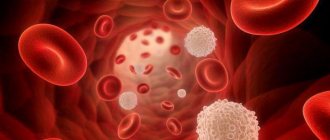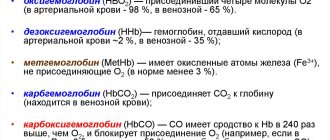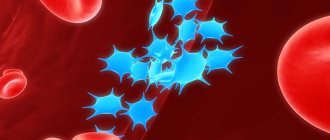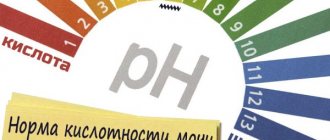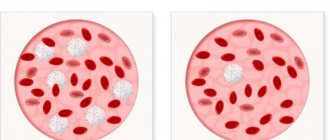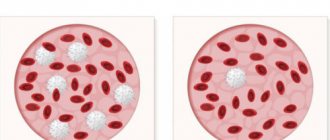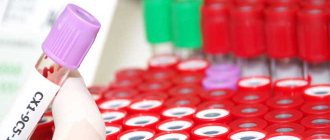Chemotherapy-induced reduction in white blood cell levels, or leukopenia, is one of the most common side effects encountered in clinical oncology. Leukopenia is a decrease in the level of leukocytes to 2 × 109 / l or lower.
Recent studies have shown that the incidence of leukopenia after chemotherapy ranges from 16% to 59%. Treatment of leukopenia after chemotherapy is mandatory because this condition causes clinically significant changes in the immune system. This negatively affects the quality of life of patients, increasing the incidence of infectious diseases and treatment costs.
Medical recovery of the body after chemotherapy
Doctors do not rule out medical recovery as a fairly good alternative to traditional medicine. On the one hand, this method is the most effective in acute forms of the disease. This also applies to those patients who did not tolerate chemotherapy well. In this case, without appropriate medications, it is very difficult to restore blood and the functioning of all organs. These are medications from the groups of steroids, antihypoxants, antioxidants and various special vitamins.
Also, quite often anti-inflammatory drugs are added to the system to destroy possible inflammation of the organs. It is worth noting that for many, this medicinal method of recovery does not help at all and resort to natural methods. This can be herbal medicine and herbal healing.
Signs of a low level
It is imperative to raise hemoglobin after chemotherapy , since the further success of rehabilitation depends on this. The chemical composition of the blood is determined using a general analysis, but a lack of hemoglobin can be diagnosed without resorting to this procedure, based on characteristic symptoms:
- muscle and general weakness;
- decreased activity (constant drowsiness);
- pale skin;
- headache, myalgia;
- lowering blood pressure;
- loss of consciousness, dizziness;
- violation of eating habits, nonspecific taste preferences;
- impaired sense of smell (olfactory hallucinations);
- the appearance of dermatological reactions (itching in the perineum, rashes, peeling, spots, inability of the skin to normal thermoregulation, jaundice);
- the appearance of characteristic “cold” sores on the lips;
- poor condition of gums, hair, nails.
Also, signs of iron deficiency in the blood correlate with all known symptoms of anemia:
- unstable bowel function;
- painful sensations in the chest;
- fragility of blood vessels (varicose veins, hematomas, hemorrhoids);
- enlarged spleen;
- heart rhythm disturbance.
What is blood restoration?
In medicine, there are special criteria by which the state of the blood in the body is monitored before and after chemotherapy. This is a general blood test, biochemical analysis and leukocyte formula. This group of tests allows you to monitor the patient’s health status and assess the condition at a given time.
Read about the importance of leukocytes in the human body in the article:
It is not always possible to maintain normal blood sprouts after chemotherapy, which most often appear some time after the procedure. Those patients who successfully survived the first stage of the disease will also have to endure the second. It usually lasts for a week. At this time, swelling and infiltration are observed, which leads to necrosis and subsequent destruction of the tissues of the gastrointestinal tract. This period is characterized by the death of bone marrow sprouts and metabolic disorders. As a consequence of this, all cancer patients experience anemia, leukopenia, bruising and, in some cases, internal bleeding of organs. To prevent this, the only way is a blood transfusion or bone marrow transplant.
Chemotherapy for cancer
Chemotherapy literally means drug treatment; in cancer therapy, it means treating tumor cells with cytotoxic drugs. One or more medications may be recommended. There are more than 100 different drugs currently available, and the development of new cytostatic agents continues.
How optimal the chemotherapy method is for each specific case depends on many factors:
- type of cancer;
- location of the original tumor;
- degree of malignancy;
- spread of the tumor process;
- general health status.
The Tlv.Hospital company offers the best cancer treatment regimens in Israel under the supervision of world-renowned experts in the country's leading clinics.
We are the official representative of the Israeli Association of Medical Tourism Companies, therefore we guarantee service abroad at the prices of the Ministry of Health of the host country.
By contacting us, you will receive responses to your queries within 48 hours.
Partnerships with public and private hospitals in Israel are a good basis for fast and professional diagnostics, therapy, and rehabilitation abroad.
Call today!
Sign up for a consultation
How is chemotherapy administered?
This method can be recommended as monotherapy or in combination with other treatment methods
- radiotherapy;
- surgery;
- hormone therapy;
- targeted therapy;
- a combination of any of these methods.
It is possible to carry out high-dose chemotherapy as part of a bone marrow or stem cell transplant.
Basic principles of chemotherapy
This treatment destroys cells as they divide into new cells. Body tissues are made from billions of individual cells. After the growth process is completed, the body's cells stop actively dividing and multiplying. The division process is resumed if damage needs to be repaired. From one cell two are created, then from two - four, from four - eight, etc.
In cancer, cells continue to divide until a large volume is created, which becomes a tumor. Because cancer cells divide much more frequently, chemotherapy is much more likely to kill them.
Some cytotoxic drugs destroy tumor cells by damaging their control center. Other medications interrupt chemical processes involved in cell division.
Chemotherapy drugs can enter the body in the form of intravenous injections, droppers, tablets and capsules.
Cytostatic agents, penetrating the body, cover the entire body through the bloodstream. They are able to overtake a malignant cell almost anywhere in the body. This form of treatment is called systemic.
How chemotherapy works - its effect on the body
Cytostatic drugs damage cells during their division. At the center of every living cell is a nucleus that controls it. It contains chromosomes, which are made up of genes. These genes must be copied exactly every time a cell splits into two new ones.
Chemotherapy damages genes inside the cell nucleus. Some drugs hit at the moment of division, others - when copies of genes are created before division.
Cells that are at rest—most healthy cells—will not be damaged. The patient may be prescribed a combination of chemotherapy drugs that cause damage to cells at different stages of the cell division process.
Using multiple drugs increases the chance of killing more tumor cells.
The fact that chemotherapy drugs destroy dividing cells helps explain the side effects. This treatment affects healthy tissue, whose cells are constantly growing and dividing. Examples of such cells are skin, bone marrow, hair follicles, and the mucous membrane of the digestive system.
- Hair always continues to grow.
- The bone marrow continually produces blood cells.
- The skin and mucous membrane of the gastrointestinal tract do not stop renewing.
Because these tissues have cells that are constantly dividing, they can be damaged by chemotherapy. But healthy cells will be replaced with new ones or restored. Most side effects go away at the end of treatment.
Get a doctor's consultation
Does chemotherapy help with cancer and how effective is it?
The likelihood of curing the disease with cytostatic drugs depends on the type of cancer:
- Some types of malignant tumors can be cured with chemotherapy.
- With other types of cancer, fewer people recover.
There is a high probability of recovery after chemotherapy for testicular cancer and Hodgkin's lymphoma.
For other types of oncology, treatment with cytostatic drugs alone will not lead to complete relief from the disease. But it will be beneficial in combination with other methods of therapy. For example, for many people with breast or bowel cancer, chemotherapy after surgery reduces the risk of recurrence.
For other types of cancer, if recovery is unlikely, your doctor may suggest chemotherapy:
- to reduce the size of the tumor;
- relieve symptoms;
- increase life expectancy by controlling the progression of the disease or promoting remission.
Doctors use the term remission when talking about oncology. It means that after treatment there are no signs of cancer. There may be complete or partial remission.
Complete remission means there are no signs of the disease after scans, blood tests and other tests. Doctors also call this condition complete response.
Partial remission indicates that some of the pathological cells are preserved. The tumor has shrunk but can be detected by scanning. Treatment can stop the progression of the disease or reduce the size of the tumor.
Doctors use another term - stable disease, when the tumor remains the same size or has increased slightly.
Chemotherapy prescription
Treatment with cytostatic agents is recommended:
- To reduce the volume of a tumor before surgery or radiation.
- In order to prevent the risk of relapse after surgery or radiation therapy.
- As monotherapy if the cancer type is sensitive to this treatment.
- To treat metastatic cancer.
Chemotherapy may be offered before surgery to reduce the size of the tumor.
Thus, a smaller volume of surgical intervention will be necessary, and it will be easier for the surgeon to completely remove the malignant process.
Shrinking the tumor through chemotherapy will also mean less radiation treatment. This treatment is called neoadjuvant. Sometimes doctors call it primary treatment.
Chemotherapy may be recommended after surgery or radiation. The main goal is to reduce the risk of the disease returning in the future - adjuvant therapy. Cytostatic drugs penetrate into all areas of the body and destroy malignant cells that have detached from the primary tumor before surgery.
Sometimes chemotherapy is scheduled at the same time as radiotherapy. The treatment is called chemoradiotherapy. Cytostatic drugs increase the effectiveness of radiotherapy, but also increase side effects.
Why chemotherapy may be recommended - features
Your doctor may suggest chemotherapy if there is a chance that the disease may spread in the future or has already metastasized. Chemotherapy is used because it circulates throughout the body through the bloodstream.
This is a type of systemic therapy that helps destroy tumor cells anywhere. Surgery and radiation therapy are known as local treatments because they affect a specific area.
Sometimes the abnormal cells break away from the original site and travel to other parts of the body through the bloodstream or lymphatic system. Having changed localization, they develop into new tumors - secondary foci or metastases. Chemotherapy drugs travel throughout the body, destroying any malignant cells that have spread.
The choice of drugs is determined by the type of malignant tumor. Different cytostatic agents have been developed for different types of cancer. Thus, the chemotherapy drugs needed to treat breast cancer that has spread to the lungs will be different from the drugs intended for cancer that originated in the lungs.
Why is chemotherapy not prescribed?
Some types of cancer are very sensitive to chemotherapy, others are not. In the second case, the doctor will not recommend treatment with cytostatic agents.
In addition, you must be reasonably healthy to undergo chemotherapy. Some people worry that they are too old, but it's not about age.
Older people may have other health problems that may cause serious or long-term side effects. These problems may be a contraindication to chemotherapy. This method can also put stress on organs, such as the heart.
Therefore, doctors check the condition of the heart, lungs, kidneys and liver before starting treatment. Assess the benefits and risks of therapy and discuss them with the patient.
Where does chemotherapy take place?
If the patient is prescribed chemotherapy drugs in tablets or capsules, they can be taken at home. You must visit the hospital regularly for checkups and blood tests.
When continuous, low-dose chemotherapy is required, the patient may use a portable pump. It is installed in a hospital and is the size of a small water bottle. The pump provides a constant dose of chemotherapy. You need to visit the hospital every few days to refill your pump or remove it.
Outpatient chemotherapy
Intravenous chemotherapy is carried out in a day hospital. The procedure can last from several minutes to several hours. Chemotherapy drugs can be administered through the following devices:
- Cannula – a small tube placed in a vein in the arm.
- A central catheter is placed in a vein in the neck (short-term) or chest (long-term).
- PICC line is a type of central catheter that is inserted into a vein in the arm.
- Portacath is a small device that is implanted subcutaneously into a central vein in the chest area.
You must spend several hours in the clinic. Tests precede treatment. Doctors need to see the results to make sure the therapy is safe for the patient. In addition, the solution is prepared for each patient by a pharmacist. The volume is calculated individually, depending on height, weight and general health.
Antiemetic medications may be necessary. Typically, the patient sits in a chair during treatment. If the procedure takes several hours, reading a newspaper or book is a good idea.
When therapy is required for several days and hospitalization is not needed, you can stay near the hospital, in a hotel, for example.
Chemotherapy in hospital
In certain cases, chemotherapy treatment requires a short stay in the hospital - overnight or for a few days. This may be due to the following reasons:
- The drug must enter the body slowly and under control.
- It is planned to administer several cytostatic agents over a period of hours.
- Monitoring is required during treatment to determine response to medication.
If high-dose chemotherapy is prescribed, hospitalization for several weeks will be necessary. This is because the treatment is intensive and has many unwanted effects. There will be a high risk of infection for the patient for a period following treatment. A hospital stay is important to reduce this risk.
Calculate the cost of treatment
Common names and brand names of chemotherapy drugs
Cytostatic drugs have common names - single and different brand or trade names.
For example, the original name is paracetamol, the brand name is Panadol or Calpol.
Chemotherapy drugs are manufactured by different companies, so they may have several brand names. For some cytostatics, the trade name is more common, for others it is not. Doctors can advise on this issue.
Names of combinations of chemotherapy drugs
Doctors often treat the disease with two or more drugs, and sometimes in combination with other drugs such as steroids or biological therapies. The names of the combinations are made up of the first letters of the names of the drugs - an abbreviation is used. Eg:
MIC combination
- M = Mitomycin
- I = Ifosfamide
- C = cisplatin
Or CHOP
- C = cyclophosphamide
- H = doxorubicin
- = vincristine (Oncovin)
- P = prednisolone, steroid
Source: https://tlv.hospital/onkologiya-himioterapiya/himioterapiya-pri-rake.html
Restoring the blood formula
Since a course of chemotherapy leads to a significant decrease in white blood cells, all treatment after the procedure is aimed at increasing their number. Leukocytes are responsible for searching for and timely destroying various fungi and viruses in human blood.
With a strong decrease in the number of leukocytes, as a rule, the temperature rises to 38 degrees, a rash, sore throat, diarrhea and redness around the wounds appear . Also during chemotherapy, platelets, which are responsible for blood clotting, are affected. After their significant reduction, the patient may complain of redness and bleeding of the gums, gastric hemorrhages, and uterine bleeding. In such cases, you need to be extremely careful, as such symptoms can lead to the death of the patient.
oncologist
If you have questions for oncologists, you can ask them on our website in the consultation section
Diagnosis and treatment of oncology in medical centers in Israel detailed information
Subscribe to the Oncology News newsletter and stay up to date with all events and news in the world of oncology.
Negative changes in the blood during chemotherapy do not always occur. However, if certain problems arise, there are ways to correct the blood system.
Chemotherapy is often an integral part of antitumor treatment, which can be used in complex treatment or as the only method of cancer therapy. Chemotherapy is a systemic treatment, meaning chemotherapy drugs circulate throughout the body. Thus, this type of therapy has a number of side effects on various organ systems. In this article we will talk about what changes may be observed in the blood system during a course of chemotherapy.
Let us immediately make a reservation that side effects from chemotherapy are not systematic and in most cases are temporary. However, information about possible complications is very important for the patient, as it will help him cope better with difficulties.
During the first 2-3 weeks, chemotherapy may cause a decrease in the number of white blood cells, red blood cells and platelets.
Neutropenia and leukopenia
Neutropenia is a decrease in the number of certain white blood cells. As a rule, this phenomenon during chemotherapy is temporary, and the level of leukocytes begins to gradually rise already in the third week. Otherwise, your doctor may decide to change the prescribed doses of chemotherapy drugs or prescribe a different type of treatment to prevent infections.
In some cases, chemotherapy can lead to a decrease in white blood cell production. This condition is called leukopenia, in which the body's ability to fight infection is reduced. In this regard, during this period it is necessary to adhere to the following recommendations:
- drink plenty of fluids (at least 2 liters per day);
- avoid contact with people suffering from colds, flu and other infectious diseases;
- protect yourself from cold or heat;
- avoid mass events;
- try not to use public transport and use a protective mask;
- avoid sudden temperature changes;
- avoid contact with animals, insects and dirt;
- avoid anything that can cause an allergic reaction;
- avoid exposure to sunlight;
- carefully observe the rules of personal hygiene (wash your hands regularly with soap, give preference to an electric razor);
- Avoid minor cuts and injuries.
If an infection develops
However, despite the above precautions, infection can still occur. Here are the main symptoms of the infectious process:
- body temperature above 38.5 degrees; body temperature of 38 degrees, which lasts more than 24 hours; body temperature below 36.5 degrees;
- night sweats and chills;
- cough, shortness of breath and chest pain;
- pain when urinating and pain in the bladder;
- diarrhea (diarrhea) that lasts several days;
- swelling and redness in the arms and legs;
- inflammation in the oral cavity, the appearance of ulcers;
- redness, swelling or pain at the injection sites.
If you have any of the above symptoms, be sure to contact your doctor.
Anemia is a condition in which there is a decrease in hemoglobin levels, often with a simultaneous decrease in the number of red blood cells (RBCs). During chemotherapy, anemia is temporary, but identifying it is important to reduce symptoms associated with this disorder.
The main manifestations of anemia are:
- fatigue, dizziness, congestion in the ears;
- low blood pressure;
- chest pain, shortness of breath, rapid heartbeat;
- pallor.
When anemia is diagnosed, special medications are prescribed to stimulate the production of red blood cells. A blood transfusion may also be offered.
Thrombopenia
Platelets are platelets of blood that allow blood to clot, forming a clot. During a course of chemotherapy, you need to regularly conduct blood tests to check your platelet levels. If their level is below normal, then there is a risk of bleeding. If there is sudden bleeding from the nose, gums, or blood in the stool, you should immediately consult a doctor. Bruises and bright spots appearing on the skin should also alert you.
If during chemotherapy the level of red blood cells, white blood cells and platelets decreases simultaneously, then we are talking about aplasia. Aplasia develops on days 10-12 of chemotherapy. In some cases, hospitalization is indicated for aplasia in order to avoid worsening the condition and restore body functions.
For each malignant disease, a certain chemotherapy is performed, which in clinical studies has proven its advantages in terms of results and toxic manifestations. Each chemotherapy drug has a certain range of complications from organs and tissues, so the list of tests for those being treated for breast or kidney cancer varies, but there are also general examination standards.
What is needed to increase the level of white blood cells?
- vitamins B, C and folic acid;
- regular consumption of amino acids, methionine and lecithin;
- Vitamin B12 is very good at increasing white blood cells and accelerating their activity.
In such cases, do not forget about the possible individual intolerance of the body to certain drugs. Therefore, before use, it is necessary to consult a doctor and conduct appropriate analysis before and after chemotherapy.
To increase platelets you need:
- abundant intake of calcium, zinc, potassium and magnesium;
- It is useful to take lysine, folic and ascorbic acid.
The above microelements can be obtained by taking dietary supplements. This is very important, since platelets are responsible for blood clotting. And for cancer patients, this indicator is one of the main ones. This is especially true during the rehabilitation period after chemotherapy.
Lymphocytes and leukocytes are aimed at protecting the body from bacteria and viruses. Therefore, their normal and necessary quantity is very important for life. When there are not enough lymphocytes in the body, this greatly weakens the patient’s body after chemotherapy. Restoration of platelets and leukocytes in the blood is a basic and integral part of the rehabilitation period.
About restoring the number of leukocytes in the blood to normal values is written here:
Folk remedies for hematopoiesis
You can increase white blood cells and normalize blood composition with simple and affordable, but effective folk remedies.
- Oat decoction in milk
Place the unpeeled and washed oat grains in a saucepan up to half its volume and fill it to the top with milk. Boil for 20 minutes over low heat. Cool the broth and drink it like water all day.
- Rose hip decoction
Chopped rose hips (5 tablespoons), boiled in 2 liters of water for 10 minutes, will cure anemia and activate the production of white blood cells. The broth is covered with a fur coat and left overnight. They drink the drink like tea.
- Carrot salad with honey
On an empty stomach before breakfast, a salad of grated carrots (100 g), sour cream (1 tbsp) and honey (1 tsp) is useful for improving blood composition. For anemia, it is useful to eat salad before each meal - 50 g.
- Sweet clover herb in infusion
Sweet clover (2 tsp) is poured with cold water (1.5 tbsp) and allowed to stand for 4 hours. You can increase the level of leukocytes in 30 days by taking a quarter glass twice daily.
Advice. Shilajit effectively restores leukocytes according to a scheme developed by the attending physician, or a 25% tincture of barberry roots. It is worth remembering red blood cells and consuming 1 tsp. before each meal (30-60 minutes), stinging nettle powder with honey in equal parts by weight with water (2 tbsp.). During chemotherapy, you need to cleanse the blood of toxins with a decoction of flax seeds: pour boiling water (1 liter) over the seeds (2/3 cup) and simmer in a bathhouse for 2 hours. After lunch before dinner you need to drink the entire broth along with the seeds.
Complex measures can improve blood composition after chemotherapy. It is important to change your diet and exclude animal fats and their substitutes, salty or too sweet foods, preservatives, white flour baked goods and cakes, alcohol and nicotine. Do not get carried away with dishes made from meat, potatoes and mushrooms, fatty fish and beans, strong tea and coffee.
← Hemoglobin norm in men and women by age
Norm of leukocytes in men and women, reasons for increase and decrease →
We recommend studying similar materials:
- 1. Autoimmune hemolytic anemia in children: what is missing and how it manifests itself
- 2. How to choose a diet based on your blood type: losing weight together
- 3. The level of basophils in adults has decreased: how to treat basophilia
- 4. What does a high level of neutrophils mean and is it dangerous?
- 5. Norms for the content of neutrophils in the blood and what functions they perform
- 6. Low level of total bilirubin in the blood: reasons for the decrease
- 7. Normal bilirubin levels in newborns and children: reasons for the increase
Restoring immunity after chemotherapy
The condition of the blood directly depends on the strength of our immunity. Therefore, his role is quite important. To increase this indicator, patients need to take special immunomodulators. As a rule, they are contained in some dietary supplements. These could be, for example, dietary supplements - Ursul, Nutrimax, Bisk and many others. These drugs are rich in glycosides and bioflavonoids - plant substances that prevent the development of tumors and increase the effectiveness of treatment against the development of possible tumors. Other drugs that have proven themselves quite well are Antiox, which contains additional immunomodulators and selenium antioxidants.
How do you know if chemotherapy is effective?
Depending on the type of cancer and treatment, methods for assessing the effectiveness of chemotherapy vary. Some patients are referred for radiological testing (PET, CT, MRI) to determine how much the tumor has shrunk. The effect of treatment on some types of cancer can be monitored by analyzing the level of a corresponding tumor marker in the blood - if the chemotherapy is working, its levels will decrease. In some cases, a decrease in a patient's symptoms may be a sign that the prescribed treatment is helping.
Many chemotherapy drugs can cause birth defects in the fetus. It is therefore recommended to avoid pregnancy during treatment.
The results of treatment with chemotherapy drugs vary depending on the location and type of tumor, the stage of the disease, the patient's condition and many other factors. However, in general, chemotherapy is rightfully considered one of the most effective ways to fight cancer, since the use of drugs in this group in many cases allows one to prolong the patient’s life while maintaining its quality, and sometimes even achieve a state of stable remission, actually comparable to recovery.
Nutrition after chemotherapy to restore blood
As a rule, the basic diet after chemotherapy should be prescribed by the attending physician. This is explained by the individual characteristics of each patient. In order to increase leukocytes and platelets in a person’s blood, it is recommended to eat a number of certain foods, which in turn increase the level of these and other vital cells. This could be double the consumption of meat (beef), protein, red fruits (pomegranate, apple), as well as many other additional vitamins.
Do not forget that there are a number of certain products that are strictly prohibited for patients after chemotherapy. Such products are most often prohibited for everyone differently, based on test results and their own lack of certain cells. Since chemotherapy has a dramatic effect on the functioning of the gastrointestinal tract, doctors recommend adhering to an appropriate diet so as not to once again provoke the appearance of nausea, vomiting and diarrhea.
How often should you have a blood test?
Blood tests - general with leukocyte count and platelets, as well as detailed biochemical tests - must be done before each cycle of chemotherapy. With a long cycle with weekly drug administration, the neutrophil level should be checked on the eve of administration, because the leukocyte level begins to decrease 7-10 days after the first injection of the cytostatic.
The time for performing a control blood test after chemotherapy is based on the initial state and the combination of cytostatics used, that is, always individually, but no later than 5-7 days after completion of chemotherapy. Further monitoring depends on the depth of neutropenia; daily monitoring of indicators is not excluded. If your white blood cell count is normal, the next test is scheduled before starting chemotherapy.
Methods for restoring blood in traditional medicine
If you pay attention to traditional medicine, there are some plants whose action is aimed at the general restoration of blood and the state of human health after chemotherapy. Such plants include aloe, lungwort, plantain and others. It is aloe extract that helps to quickly inhibit the development of metastases, which is especially important for cancer patients during the rehabilitation period.
The action of plantain is aimed at normalizing the motor and secretory processes of the digestive tract. It also helps with the healing of internal tears and bleeding. Lungwort, in turn, helps inhibit the growth of malignant tumors and is rich in various microelements. By taking such herbs in combination, you can quite well help your body in the fight during the rehabilitation period after chemotherapy. But in any case, do not forget about additional consultation with your doctor, because some treatment methods may simply not suit you.
- Author: Boris
How did I become a doctor? Quite a difficult question... If you think about it, there was no choice. I was born into the family of a resuscitation doctor, and every day at dinner I heard my father’s story about how his day went. As a child, this all seemed fantastic, beyond reality. Rate this article:
- 5
- 4
- 3
- 2
- 1
(2 votes, average: 4.5 out of 5)
Share with your friends!
Contraindications to chemotherapy
Antitumor treatment is inherently toxic - chemotherapy kills any cells, and not all normal tissues are able to resist cytostatics.
In each clinical case, the time of administration of the chemotherapy drug and its dose are determined individually, based on many criteria. Formally, chemotherapy cannot be started if the leukocyte level is below the standard norm, but with neutrophils above 1500 there is not always a need to reduce the single dose of chemotherapy. And with a lower level of neutrophils, it is possible to continue treatment, but with careful and regular monitoring of indicators and with the presence of CSF in reserve.
The lower limit for starting chemotherapy for platelets is above 100 thousand, for hemoglobin - above 90 g/l; on an individual basis, these limits can be lowered by changing the dose of the administered cytostatic and the intervals between injections. Of course, an average degree of decline, and even more so a severe one, is a contraindication for chemotherapy, but it is temporary - until recovery.
Of course, the veracity of the indicators, especially in the process of antitumor treatment, depends on the available laboratory equipment and the quality of the reagents; the speed of the study plays an important role. In our clinic, any research corresponds to the level of an expert opinion, otherwise our employees simply do not know how to work.
Book a consultation 24 hours a day
+7+7+78
Bibliography:
- Lugovskaya S.A., Morozova V.T., Pochtar M.E., Dolgov V.V. /Laboratory hematology// M.: Publishing house. Unimed-press; 2002.
- Orlova R.V., Gladkov O.A., Zhukov N.V., et al. /Practical recommendations for the treatment of anemia in malignant neoplasms // Malignant tumors: Practical recommendations RUSSCO #3s2, 2020 (vol.

- Oganesyan A.A., Garbatsevich M.S., Kostyukovich D.I. and others /ESR: old test, new opportunities // Lab. diagnostics. Eastern Europe; 2012; No. 4.
- Protsenko S. A., Antimonik N. Yu., Bershtein L. M., et al./ Practical recommendations for the management of immune-mediated adverse events // Malignant tumors: Practical recommendations RUSSCO #3s2, 2020 (vol. 8).
Increasing white blood cell growth through diet
When white blood cells drop sharply after chemotherapy, they resort to any acceptable measures, just to quickly strengthen the immune system. What to do in such a situation? How to quickly restore immunity? If you do not increase the number of leukocytes in time, infection or virus will lead to a worsening of the condition.
To increase white blood cells at home, you should pay attention to the following recommendations from doctors:
- The diet after chemotherapy should be rich in vegetables, fruits and berries. Red and orange fruits will help maximize the number of leukocytes: tomatoes, red bell peppers, red currants, pomegranate, pumpkin.
- To raise white blood cells, it is good to eat protein foods. It is better if it is chicken and fish. Prepare light broths or soups from meat. Also introduce shrimp, seaweed, and mussels into the diet.
- A good increase in white blood cells can be achieved with the help of walnuts. Doctors recommend eating several pieces a day.
- Buckwheat porridge is a storehouse of vitamins, so it can be consumed in the morning. And you don't have to cook it. Just rinse and pour either kefir or warm milk. It should sit and swell overnight. In the morning you can eat ready-made porridge. Add fruit and honey if desired.
- The diet of a person who suffers from low white blood cells should include fermented milk products and red varieties of fish.
- Drink vegetable and fruit juices throughout the day. Freshly squeezed, not packaged. High efficiency in terms of increasing leukocytes was observed in carrot, beetroot and pomegranate juice. Natural pomegranate juice is diluted with water in a ratio of 1:2.
Advice! Beetroot juice must be prepared correctly so that it retains the maximum amount of nutrients. To prepare, grate the beets on a fine grater and add 1-2 teaspoons of sugar. Stir and set aside for 6-8 hours to allow the juice to separate better. Then squeeze out the juice through cheesecloth. Drink 10 ml three times a day after the main meal.
- If you notice a low level of leukocytes, then start every morning with a glass of water and 20 ml of natural honey. It can be diluted in water or simply washed down.
- Some doctors allow drinking dry red wine in small quantities, as it promotes the active production of leukocytes.
- Pay special attention to water. Drink at least 2 liters of plain water per day. It is better that it is cleaned with a filter or boiled. You can also include green tea, compotes, juices and berry fruit drinks.
- If leukocytes are low, avoid fatty, fried, spicy and salty foods. Canned foods, sausages and smoked products, and animal fats negatively affect human health during this period. Sweets and baked goods reduce leukocytes.
These are basic recommendations for chemotherapy. The fall in leukocyte levels begins after the first administration of the drugs, so you need to monitor your diet all the time.
What is the norm
The optimal number of white blood cells varies between genders, healthy people and those undergoing chemotherapy. For men, the norm ranges from 4.3x109/l to 11.3x109/l, for women - 3.2-109/l - 10.2x109/l.
After a course of chemotherapy, the amount of 2.5x109/l is considered within the normal range.
If the indicator falls within this interval, then special drugs are not prescribed. Otherwise, during the entire course of treatment you should take medications, hormonal drugs prescribed by your doctor, and adhere to a diet.
Traditional Methods for Raising White Blood Cells
These include proper diet and medications. Most often, they come together, since only with the help of certain foods it is impossible to raise leukocytes to normal levels.
After chemotherapy, medications are prescribed, which are divided into gentle and strong.
The former include “Imunofan” and “Polyoxidonium”, but “Neupogen”, “Leukogen”, “Cefaransin”, “Pyridoxine” and others are considered stronger.
In addition, the situation can be improved with the help of extracorporeal pharmacotherapy, which is also impossible without drugs, but the method of delivering them “to the place” is somewhat different: they enter directly into the circulatory system with the help of donor red blood cells.
Some medications help to quickly increase the level of white blood cells, for example, Methyluracil and Leukogen. But under no circumstances should you take them on your own .
In an effort to forget a low white blood cell count in a few days, it is important to monitor your well-being and consult a doctor if your temperature rises.
Severe exhaustion, old age
When a person is in a state of cachexia - exhaustion - his body is greatly weakened. The side effects of chemotherapy drugs are much more difficult to tolerate and can lead to death. In such cases, oncologists prescribe chemotherapy with caution or not at all. Cachexia further aggravates the condition of older people, whose bodies are already weakened by age-related changes.
Chemotherapy is much worse tolerated by people who have dehydration, severe metabolic disorders, electrolyte, acid-base balance, or chronic diseases with severe disorders of the internal organs.
The doctor should always weigh the potential benefits of chemotherapy, the expected effect and the possible risks. Doctors at the European Clinic adhere to the concept of personalized cancer treatment. Even in severe cases, we always try to find options that will help improve the patient’s condition with minimal risks.
Chemotherapy is a very effective method of fighting cancer. Despite the fact that doctors try to select those chemotherapy drugs that mainly affect malignant cells, healthy ones are also affected.
As a result, the patient’s hair falls out, immunity deteriorates, digestive problems begin, and the balance of the composition in the blood is greatly disturbed. The speed of recovery and the duration of rehabilitation depend on the doctor, the patient and the chosen treatment.
Thrombocytopenia
Thrombocytopenia is one of the complications of chemotherapy, characterized by a decrease in the level of platelets (irregularly shaped cells produced by red bone marrow) in the blood. The function of these cells is to ensure blood clotting. Shaped plates close the lumen of the vessel at the site of its damage and prevent the passage of blood through it, thereby stopping bleeding. Platelets stop even significant bleeding and prevent large blood loss; without them, even a slightly cut person can die. Patients with thrombocytopenia should be especially attentive to their safety, because the slightest scratch can have unpleasant consequences for them.



